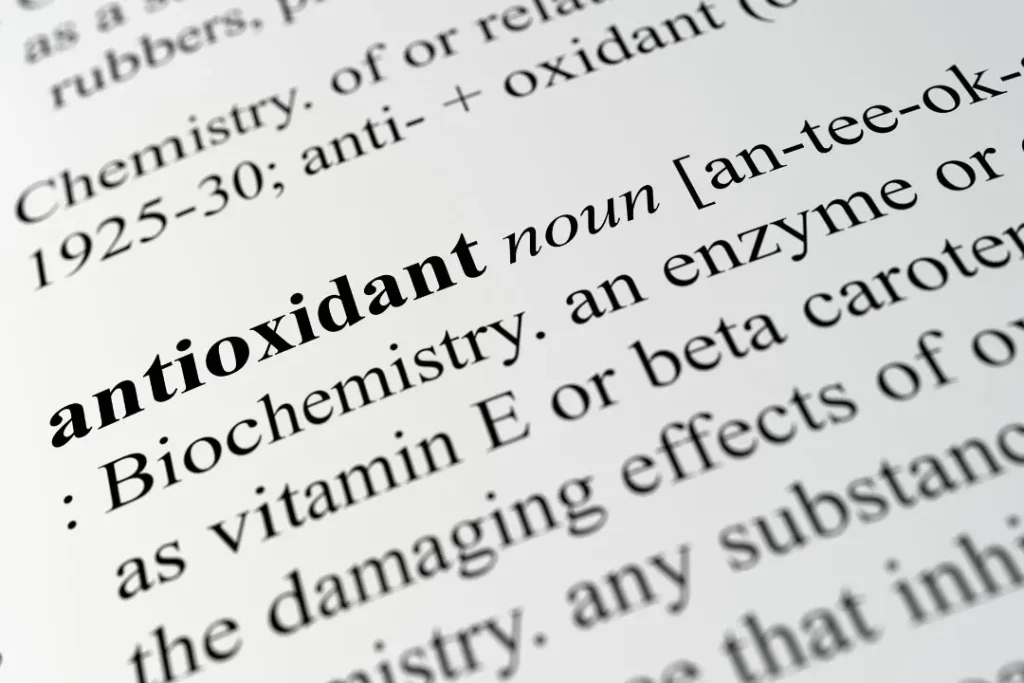The annual plant known as German chamomile, or Matricaria chamomilla, is indigenous to Western Asia and Europe. This Asteraceae family member, distinguished by its small daisy-like blossoms, has long been recognized for its healing powers. The nature, health advantages, recommended dose, adverse effects, possible drug interactions, and safe usage of German chamomile are all covered in this article.
You May Also Like:
5 Great Nootropic Herbs for Energy, Focus, and Productivity
A Nootropic Herb for Cognitive Enhancement: Discover Bacopa Monnieri Benefits and Side Effects
German Chamomile: Benefits, Dosage, Side Effects, Drug Interactions, and Other Important Information is an original (NootropicsPlanet) article.
Nature of German Chamomile
German chamomile is gathered for its flowers and leaves, which have a pleasant, apple-like aroma. The complex chemistry of this plant, which contains a number of active ingredients including flavonoids, sesquiterpenes, coumarins, and phenolic acids, is what gives it its medicinal qualities. The possible health advantages of German chamomile are specifically attributed to each category of components.
Flavonoids found in the plant, including apigenin, luteolin, and quercetin, have antioxidant, anti-inflammatory, and anticancer activities. Numerous investigations have concentrated on apigenin in particular because of its possible effects on the neurological system.
The medicinal character of the plant is enhanced by sesquiterpenes such -bisabolol and matricin. Strong anti-inflammatory, antibacterial, and antifungal activities are present in them.
Phenolic acids have antioxidant activity, which is important for scavenging dangerous free radicals in the body. Examples include chlorogenic acid and caffeic acid.
Health Benefits of German Chamomile
German chamomile has a wide range of health advantages, which are mostly due to its intricate chemical composition.
German chamomile has been used for centuries for its soothing properties, which are principally due to the flavonoid apigenin. This substance binds to benzodiazepine receptors in the brain, resulting in a moderate sedative effect that can help with anxiety management and sleep promotion.
The flavonoids and phenolic acids’ anti-oxidant and anti-inflammatory characteristics promote overall health and wellness by preventing oxidative stress and chronic inflammation, two major contributors to a wide range of medical problems.
Sesquiterpenes found in it, such as -bisabolol, exhibit potent antibacterial effects that aid the body’s defensive mechanisms against several diseases. They also have strong anti-inflammatory actions, which aid in the management of illnesses marked by inflammation.

Chemistry of German Chamomile
German chamomile, Matricaria chamomilla, has a complicated and fascinating chemical composition that contributes to its numerous potential health advantages. Several kinds of active substances, including flavonoids, sesquiterpenes, coumarins, and phenolic acids, are among the main ingredients.
Most fruits and vegetables include a variety of phytonutrients called flavonoids, which have been linked to a number of health advantages. Flavonoids including apigenin, luteolin, and quercetin are frequently found in German chamomile.
The plant contains the sesquiterpenes matricin and -bisabolol. Strong anti-inflammatory, antibacterial, and antifungal effects are what these substances are renowned for.
German chamomile also contains coumarins, a class of phytochemicals with anti-inflammatory and antispasmodic properties that are renowned for enhancing vascular health.
The plant also contains phenolic acids including chlorogenic acid and caffeic acid. These antioxidant-rich chemicals are essential for neutralizing dangerous free radicals in the body and lowering inflammation.
Physiological Mechanisms of Action of German Chamomile
German chamomile contains a number of bioactive chemicals that are responsible for its physiological effects on the body.
A flavonoid called apigenin exhibits a strong affinity for the brain’s central benzodiazepine receptors. Apigenin causes a sedative effect by binding to these receptors, which can reduce anxiety and encourage sleep. The ability of German chamomile to treat mental health issues is highlighted by its interaction with the central nervous system.
The sesquiterpenes, such as -bisabolol, have a wide range of physiological effects. By modifying the body’s immunological response through their anti-inflammatory activity, they may be able to lessen the severity of illnesses marked by chronic inflammation. These chemicals’ antibacterial and antifungal activities help treat a variety of microbial illnesses.
German chamomile has potent antioxidant properties thanks to its phenolic acids and flavonoids. These substances assist in lowering oxidative stress, a major factor in aging and many chronic illnesses, by neutralizing damaging free radicals.
Due to their antispasmodic properties, coumarins can help relax muscles and lessen tension in the body.
German chamomile is a diverse medicinal plant with potential advantages for both physical and mental health due to the interaction of these numerous components and their physiological activities. However, further study is required to comprehend its modes of action completely and possible therapeutic uses.

Optimal Dosage of German Chamomile
The best dose of German chamomile varies on numerous variables, including the way it is consumed, the user’s health, and their age. One to four cups of German chamomile tea per day are suggested as a general rule of thumb. Consumption in the mode of tea should roughly contain between 25 mg to 2000 mg per day.
It is essential to adhere to the manufacturer’s recommendations or get guidance from a healthcare professional when using alternative forms, such as tinctures or capsules. Personalized advice is frequently required due to the variations in potency of different preparations and individual tolerances.
Side Effects of German Chamomile
While most people believe German chamomile to be harmless, some may develop adverse responses, particularly those who have allergies to plants in the same family as ragweed, chrysanthemums, marigolds, or daisies. Skin rashes to life-threatening allergic responses are examples of symptoms.
German chamomile has not been well studied for long-term safety, and excessive ingestion may cause vomiting. So, moderation is key, as is keeping an eye out for negative consequences.

Potential Substance Interactions of German Chamomile
There may be drug interactions with German chamomile. Notably, because of its modest sedative properties, it may enhance the effects of drugs that depress the central nervous system, resulting in more sleepiness or sedation.
The presence of coumarin molecules may also interact with anticoagulant and antiplatelet medications, possibly raising the risk of bleeding.
Responsible Use of German Chamomile
The wise use of German chamomile is essential given its potential adverse effects and interactions. When ingested in moderation, it is typically harmless, however if you have any allergies or aretaking any medication, you should use caution and talk to a doctor.
Potential advantages include relieving anxiety and promoting general health and wellness. To utilize a supplement safely and effectively, one must understand its nature, advantages, possible hazards, and interactions. Our knowledge of this extraordinary plant and its ideal use in health and wellbeing is only growing with each passing day.

German Chamomile:
Conclusion
German chamomile, or Matricaria chamomilla, is an iconic medicinal plant with a rich history of healing powers. Its intricate chemical composition, comprising flavonoids, sesquiterpenes, coumarins, and phenolic acids, contributes to its numerous potential health benefits, making it an attracitve option for people seeking its remedial effects. From its soothing properties to its antioxidant, anti-inflammatory, and antibacterial effects, German chamomile offers a wide range of advantages for both physical and mental health.
However, responsible use is crucial, as some individuals may experience adverse reactions, especially if they have allergies to plants in the Asteraceae family. It is essential to follow recommended dosages and consult healthcare professionals, especially when using alternative forms of the herb.
References:
- “Chamomile: A herbal medicine of the past with bright future.” Retrieved from: https://www.ncbi.nlm.nih.gov/pmc/articles/PMC2995283/
- However, regulating chamomile tea, valerian root, and hawthorn berry syrup, with their hundreds of compounds in the same way as Prilosec, Ambien, and artificial hearts, disregards the fact that each botanical medicine has several hundred years of historical use and has been in the public domain for those several hundred years, threatens to undermine the potential benefits herbal medicines possess. Retrieved from:https://www.sciencedirect.com/topics/agricultural-and-biological-sciences/chamomile
- The Mechanism Action of German Chamomile (Matricaria recutita L.) Retrieved from:https://www.frontiersin.org/articles/10.3389/fphar.2021.706836/full
Important Note: The information contained in this article is for general informational purposes only, and should not be construed as health or medical advice, nor is it intended to diagnose, prevent, treat, or cure any disease or health condition. Before embarking on any diet, fitness regimen, or program of nutritional supplementation, it is advisable to consult your healthcare professional in order to determine its safety and probable efficacy in terms of your individual state of health.
Regarding Nutritional Supplements Or Other Non-Prescription Health Products: If any nutritional supplements or other non-prescription health products are mentioned in the foregoing article, any claims or statements made about them have not been evaluated by the U.S. Food and Drug Administration, and such nutritional supplements or other health products are not intended to diagnose, treat, cure, or prevent any disease.


